#Ghana Twist
Explore tagged Tumblr posts
Text
Ghana Twist Wigs: A Stylish and Affordable Way to Change Up Your Look
Ghana Twist wigs are a popular choice for women who want a stylish and versatile way to change up their looks. These wigs are made from twisted strands of hair that are sewn together to create a natural-looking, voluminous style. Ghana Twist wigs come in a variety of colours, lengths, and styles, so you can find one that perfectly suits your taste.
Why Choose a Ghana Twist Wig?
There are many reasons why you might choose a Ghana Passion Twist wig. Here are just a few:
They're stylish and versatile: Ghana Twist wigs can be styled in a variety of ways, so you can find a look that suits your personal style. You can wear them straight, curly, or with waves. You can also add accessories, such as beads or flowers, to your wig to create a more unique look.
They're affordable: Ghana Twist wigs are a more affordable option than human hair wigs. You can find them for a fraction of the price of a human hair wig, and they still look great.
They're easy to care for: Ghana Twist wigs are easy to care for. You can wash them regularly with a wig shampoo and conditioner, and you can style them with heat tools.
They're a great way to protect your natural hair: If you have natural hair that is prone to damage, a Ghana Twist wig can be a great way to protect it. Ghana Twist wigs can also be used to cover up hair loss or thinning hair.
How to Choose a Ghana Twist Wig
If you're considering buying a Ghana Passion Twist wig, there are a few factors you'll need to take into account to choose the best one for you. Here's a guide to help you make the right decision:
Consider your hair type and texture: Ghana Twist wigs are best suited for women with medium to coarse hair. If you have fine hair, you may find that the twists are too tight and pull on your hair. If you have very curly hair, you may need to straighten it before styling it into Ghana twists.
Choose the right length and colour: Ghana Twist wigs come in a variety of lengths, from short bobs to long, flowing styles. Choose a length that flatters your face shape and that you feel comfortable wearing. You can also choose a wig in your natural hair colour or in a fun, new shade.
Decide on the style of wig you want: Ghana Twist wigs can be styled in a variety of ways. You can wear them straight, curly, or with waves. You can also add accessories, such as beads or flowers, to your wig to create a more unique look.
Choose the right quality wig: Ghana Twist wigs can range in price from a few hundred dollars to several thousand dollars. The quality of the wig will depend on the materials used, the construction of the wig, and the brand. If you want a wig that will last for years, you'll need to invest in a high-quality wig.
Read reviews before you buy: Before you buy a Ghana Twist wig, be sure to read reviews from other customers. This will give you an idea of the quality of the wig, the fit, and the style. You can find reviews on websites, forums, and social media.
Buy from a reputable seller: There are many sellers of Ghana Twist wigs online. Not all sellers are created equal, so be sure to buy from a reputable seller. Look for a seller with a good reputation and that offers a money-back guarantee.
Taking Care of Your Ghana Passion wist Wig
To keep your Ghana Passion Twist wig looking its best, be sure to take care of it properly. Here are a few tips:
Wash your wig regularly. Use a wig shampoo and conditioner that is designed for synthetic hair.
Brush your wig regularly. This will help to prevent tangles.
Store your wig properly. When you're not wearing your wig, store it in a wig bag or box. This will help to protect it from dust and dirt.
Conclusion
Ghana Twist wigs are a stylish and affordable way to change up your look. With so many styles and colours to choose from, you're sure to find the perfect wig to flatter your face and enhance your natural beauty. By following the tips above, you can keep your Ghana Passion Twist wig looking its best for years to come.
If you want to check their website, ExpressBeautyOnline.
0 notes
Text


as far as i can tell, anyone can sign the petition here. my autofill was on so i'm not sure if it's limited to some areas. as of posting this the petition is at 68,500 out of 100,000 and as far as i can tell you can sign it as many times as you want
edit: i tried signing and reloading the page and the number didn't go up but i got emails thanking me for signing, so i'm not sure whether they count
#correct me if im wrong ! i cant tell all that well if her hair is in twists or not#ghana#ghana parliament#lgbtq#lgbtq+#lgbt#anti lgbtq#anti lgbtq laws
89 notes
·
View notes
Text



Introducing Efya Gems | The Adinkra Collection 🇬🇭✨
18k Gold Tooth Gems embodying the traditional Adinkra symbols originating from Ghana.
Shot in Ghana, this photo series encapsulates the essence of the gems, which seamlessly blend the traditional with the modern. It reflects the ability of today’s youth to draw from what has been passed down through generations, reinventing it with their own unique twist.
Photography: @askboox
Creative direction: @lissakes @askboox
Talent: @krys_ken @isurboi_protein1
Hair: @ kisse.h
Styling: @playboy_holali @half_dbee_
#askphotos#melanin#aesthetic#ghana#Efya Gems#adinkra#fashion#black tumblr#black models#african jewelry#west africa#blackout#akuawaist#brown skin girl#black photographers#repost#reblog#support black creators#beautiful#black girls#black boys
55 notes
·
View notes
Text
i used to have such long hair i used to get Ghana locs and twists that went down to my back so often now that i cut all my hair off i don’t even remember what it’s like anymore don’t think I ever want my hair long again ( it was sensory hell ) 😭😭😭😭😭😭😭 though I am curious what my sona would look with them ……. I need to go look at old photos ……….( thinking monkey )
24 notes
·
View notes
Text
I just think that people should try different hairstyles for black characters. You can't just go with the afro/straight hair/generic Braids (ignoring there's like a billion types of braids)/dreads. There's wicks there's twists there's didi there's kinki/kinky twists there's goddess braids there's brick braids there's knotless braids there's those annoying fucking side braids that look cute but are sensory hell there's feed-in braids there's snake braids there's so many crochet styles there's Ghana braids there's triangle box braids there's cornrows that turn into box braids there's braided buns there's like three million things you can do with cornrows there's so many black hairstyles that aren't being used cause people just don't care enough to research or think they're too hard to do
92 notes
·
View notes
Text
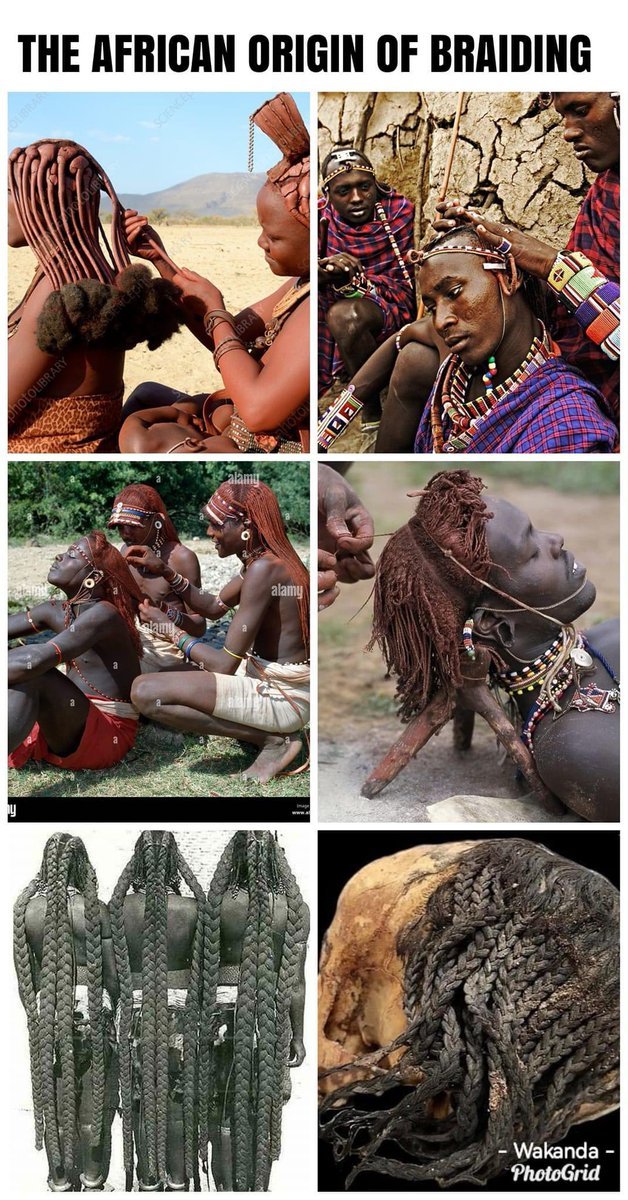
Typical African on Twitter
@Joe__Bassey
THE AFRICAN ORIGIN OF BRAIDING The origin of braids can be traced back 5000 years in African culture to 3500 BC—they were very popular among women. Braiding started in Africa with the Himba people of Namibia. The country’s Mbalantu ethnicity uses eembuvi braids as an initiation into womanhood – our first examples of single braids or “box braids". In Angola, among certain tribes, hair grooming was an activity trusted only by other family members — something that women were taught at a young age and encouraged to participate in throughout their lives to promote womanhood. The origins of the ever-popular Bantu Knots have been traced to the Bantu people who exist across central and Southern Africa. “South Africa’s “Zulu Knots” are said to be the original manifestation of the style, and South Africa is also credited for the invention of “Box braids”, with evidence of the style being traced back to 3500 BCE. Braiding’s roots in East Africa have been traced back to 3500 BC, with cornrows (called Kolese braids in Yoruba) maintaining the top spot in popularity for just as long. Historically, Somali women have been recorded donning long, small braids when approaching puberty. Ethiopia has maintained an admirably close relationship with its traditional forms of braiding. In the Southwestern Omo Valley, the Hamar people have perfected their hairstyles as a means to dictate male worth and female marital status. The importance of braids in communicating identity is a rich part of Uganda’s history, too. In Kenya, the Maasi and Kikuyu tribes have donned their famed matted braids, intricate beading, and gold detailings ever since. West Africa boasts an abundance of hair braiding styles, many of which have influenced global African culture and trends for decades. The Fula people, whose 30 million strong population exists across West Africa, gifted the world with Fulani braids. In Ghana, the iconic Banana or Ghana braids have gained favor for their easy application, upkeep, and excellence in providing protection to natural Black hair. The first examples of this way of braiding are traced back to hieroglyphics and sculptures found around 500 BC. Similarly, Nigeria’s rich history of braiding can be traced back to a clay sculpture dated to 500 BCE depicting a cornrowed member of the Nok tribe. Mali's Dogon people has various spiritual idols depicting cornrowed spiritual leaders, and the retained tradition of The Dama dance have allowed us the privilege of understanding the bewildering society that contributed to our understanding of our universe. In Sierra Leone, Mende people's hair is closely tied to femininity and is juxtaposed with the way forests grow out of the Earth – the vegetation covering Mother Earth grows skyward the way Afro-textured hair grows out of the head. Senegal’s Senegalese Twists or “Rao” as they’re known locally came in vogue as an alternative means of creating individual, long braids – if locs or “box braids” aren’t your style. Gambian warriors were known to march off to war with tightly coiled braids, too. The Mangbetu people of the Democratic Republic of Congo, known for their practice of wrapping their skulls into a cone shape from infancy, locally referred to as “Lipombo, ” the elongated heads were then adorned with braids plaited into a crowned, basket shape called edamburu. Cameroon’s bountiful Fulani community has kept many of their hair traditions well and alive, while the region’s Bantu population participated in the popularity of the now-famed ‘Bantu knots’. In Chad, women of the Basara ethnicity are known for their thick, long, luscious hair – often plaited into waist-long individual braids. In Kemet around 1600 BCE, hair braiding amongst women of royalty, nobility, and concubines was adorned with gold, beads, and perfumed grease, while common folk kept to simpler styles necessary to get work done. #Africa
13 notes
·
View notes
Text
Maryse Condé, a great lady is gone

The work of the writer Maryse Condé, who died on April 2, 2024, at the age of 90, is colossal. I will say a few words about it. This is the journey of a free black woman.
She was born in Guadeloupe and her name was Marise Liliane Appoline Boucolon. She studied in France, lived in Guinea, Ghana and Senegal. She will end her career in the United States as professor at Colombia University.
I discovered her writings with Ségou (1984). It is a two-volume saga about the decline of the Bambara kingdom of Ségou 200 years ago. This kingdom includes present-day Mali. The story ends with the arrival of French colonizers at the end of the 19th century. We follow the destiny of four Traoré brothers. The two volumes are well written, and the ambitious work keeps its promises. There are multiple intrigues and extraordinary destinies against the backdrop of the slavery trade which left its mark on Africa and sent millions of Africans to the four corners of the world.
Maryse Condé has published around thirty novels, plays and essays in her long career. The author was prolific and won numerous prestigious literary awards for her work.
I have not read all of her work, but I had great respect for her because of her ability to attack the faults of the former colonists as well as those of patriarchal, chauvinistic and authoritarian black men.
“Moi, Tituba sorcière” (1986) is another novel that I liked. This is a character inspired by a woman who existed. Tituba, a young slave of the Puritan pastor Samuel Parris, was accused of being one of the Salem witches in 1692 during a trial. It is a story rich in twists and turns that the great writer offers us, and we witness the persecution of Tituba. Beyond the irrational reaction of village women to a black woman healer, there is Tituba the slave who has a memorable destiny. Maryse Condé thus rehabilitates Tituba, whom American writers had thrown into oblivion.
Another beautiful work is “Traversée de la Mangrove” (1989). In this story that happens in one night, people come together to talk about a dead man in Guadeloupe that everyone thinks they know but that no one really knows. At the heart of this work is the question of the identity of the West Indians and even of the Africans in general.
In addition, I will say a word about “En attendant la montée des eaux” (2010). This work is about the destiny of black men. These are characters in search of a peaceful path, after exile, persecution and wandering. It is an ode to masculine friendship.
Apart from the novels, her plays were also very successful.
To understand her work, we must follow the upheavals of the black diaspora. She drops stones in her path, nuggets of gold that give a multiple image of what it means to be Black. For Maryse Condé, being from the diaspora or from Africa at 21It is century does not mean the same challenges in the world. That said, she wants to make her work a link between those descended from slaves and those coming directly from the black continent. After all, mainly the West has disrupted the modern history of these Blacks.
For her, negritude was a chimerical movement, which claimed that all black people looked the same. The writer shows throughout her stories that we must move away from stereotypical concepts of what it means to be part of the black community.
For Maryse Condé, Traoré did not dream like Ovid. Tituba did not have the same conception of the world as Ayodélé. Her characters, sometimes contemporary or ancient, remain inhabited by their own dreams and above all, they each face the challenges of life in their own way.
In her interviews, Maryse Condé always got to the point.
“At the beginning, I was a disciple of Aimé Césaire. I believed in Negritude. To me, all black people of all “races” were my brothers and sisters. Then I realized that African-Americans did not accept me. Despite my black skin, I came from elsewhere; I had other references, another story. »
It is a strong, uncompromising statement. However, she kept her ex-husband's last name (Condé) because she loved Africa. She made the difference between having been hurt by Africans and being African at heart: “The pride of being black, the pride of being a woman, the pride of being what I am, it was Africa that brought it to me. »
This is not a contradiction. Maryse Condé brings this subtlety to understand the Black world. She drew on her experience and allowed herself to give essential nuances to the spirit of identity of black people. Not to divide them but to prepare them for a better understanding between them and above all to allow them to reconcile over unintentional injuries.
A great lady is gone.
Didier Leclair, writer
17 notes
·
View notes
Text
Twisted Wonderland Tamashina-Muina event! New outfit!

I went based on Ghana's clothes and mixed the design with Nala's outfit from The Lion King Broadway. A few other patterns were taken from Vil and Leona's outfits and added to it as well.
I also added a ribbon to her side to accommodate for the presence of Grim.
Her jewelry is gold ✨️
@killersweetie
@love-thanatopsis
@moonsforher
@the-dumber-scaramouche
@b0nkers-papaya
@vtoriacore @vtoriacore-rbs
#twisted wonderland#twst#disney twisted wonderland#disney twst#twst wonderland#twst mc#leona kingscholar#savanaclaw#twisted wonderland mc#vil shoenheit#pomefiore#tamashina mina
96 notes
·
View notes
Text
Afla Sackey & Afrik Bawantu - Destination
Wah Wah 45s are proud to present the debut LP on the label from Ghanaian vocalist and djembe drummer Afla Sackey. With his band Afrik Bawantu, he has fulfilled the dream of blending traditional Ghanaian music with sizzling Afrobeat grooves, topping it off with an irresistibly funky twist! Their unique blend of vibrant African rhythms with brisk, animated horn sections and heavy bass-lines bring a fresh perspective to the Afrobeat genre. Afrik Bawantu released their debut EP, Noko Hewon, back in 2013 to much critical acclaim, and went on to be nominated in the World Music Network’s charts. In 2014 they released their debut LP, Life On The Street, which showcased the original style of Afla’s compositions, as well as his group of gifted musicians. Afla himself was born in Ghana and started his creative life as a dancer with the country’s famous Bukom Ensemble, known for their infectious folk-driven rhythms. His elders soon soon recognised the musical potential of young Afla and encouraged him with careful guidance and training. This provided the foundations upon which Sackey has developed his career in music and dance. Upon moving to London, which was made possible by the Kakasitsi Master Drummers Of Ghana, Afla undertook a masters degree at Guildhall college, from which he graduated in 2012. With his wealth of experience in music and dance, Afla went on to become an inspiring educator, providing workshops and training to a diverse range of students from primary schools to universities. He has taught Afrobeat and Afro Jazz at the Royal Academy of Music where he still often appears as a guest lecturer, as well as acting as a workshop facilitator in places as far flung as Japan, Singapore and Argentina. Afla is a great collaborator, and has worked with legendary artists such as the Sun Ra Arkestra, Ginger Baker and Tony Allen, as well as his contemporary projects with Ibibio Sound Machine, Sons Of Kemet, Dele Sosimi, The Estuary 21, Eparapo and his most recent Afro-electronic project with producer Raz Olsher - Raz & Afla. Afla Sackey - Percussion, lead vocals Louis Pocock - Drums James Wilson - Bass Oscar Jerome - Lead guitar Henry Lawry - Trumpet, backing vocal Jack Thrush - Tenor sax Harry Greene - Baritone sax, rhythm guitar Axel Kaner Lidstrom - Trumpet Andrew Woolf - Tenor sax Laura Mills - Backing vocals Alexis Krainou - Guitar solo on Sane Ye Written,arranged and produced by Afla Sackey Artwork by Tokio Aoyama
3 notes
·
View notes
Note
To you, I don’t expect that “90%” to change based on what you have told me, what I know, and what I have learned. I still find both Liberia and Israel to be audacious things that needed more thought and planning. That could have been executed in better ways as you have pointed out in the past.
To the other anon, NO we did not ASK for Liberia. As Hero-Israel pointed it Liberia was a idea created by white people to get us out. There was a protest organized by black activists against it. There were books written against it. HOWEVER people still went some of them were free black people and the others were enslaved. The movement is largely considered a failure. There were a lot of reasons for it, the lack of knowledge of the land, lack of knowledge of the language, the wars (why were their wars if the land was purchased… people lived there), and disease that the immune system of these people where not prepared for. Failure. From what I’ve heard like 5% of the people there are descendants from the original AA. So YES between living with the racist people of the 1800s who wanted them gone and/or being enslaved a minority of already free people went and a lot of enslaved people went. I am still going to say we didn’t ASK for it even if people “took advantage” I’m 98% pretty sure AA didn’t create the idea, that doesn’t mean people did not go.
During the 20th century there was a movement that supported going back to Africa and still few people left. I actually would LOVE to live in Africa but NOT by force. I HAVE reconnected to my family in Africa specifically in Ghana.
It was all discouraged and not supported? But it still happened and happens, you admitted that it still happens. You’re not all evil, to think an entire population is evil (including myself) is stupid. Maybe you specifically are delusional because the reality of war is that these things did happen at some points, we have soldiers that attested to it.
Israel was not built from nothing we have photos showing that it was not a desert in the middle of nowhere and we have records. There were people living there the Ottoman Empire was ruling the land before it collapsed you think they built nothing there? There was a airport.
What people were imprisoned? Look it up. You seem to know so much, if I look it up I get the answer that thousands of Palestinians were prisoners of war. Maybe that’s wrong, maybe you’ll find something that says absolutely no one was ever imprisoned.
I am Jewish as well (I’m mixed descended from mixed people) my family got a invite back to Spain because we were chased out during the inquisition, even if I wasn’t Jewish I’m allowed a opinions on things. My opinion is a grand both things are audacious and poorly executed.
For the furniture thing I was referring to our hair being used to stuff pillows, you know things still found at thrift stores today. I’ve heard about the human leather but I’ve never seen proof. I might believe it considering everything else but whatever. Perhaps I should have pointed to how you could rent our babies for 2 dollars and use them as gator bait, that there’s postcard for it.
You got your knickers in a twist and made a whole lot of assumptions about me. I do know about the push for America-Liberian settlement, it was failure. I do know about Zionist history apparently more than you, considering you didn’t know people were imprisoned.
Fair to include a retort from the original anon.
9 notes
·
View notes
Text
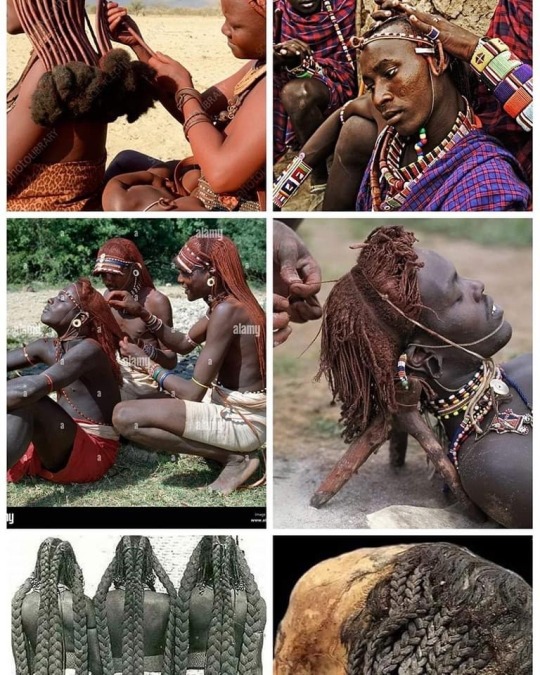
THE AFRICAN ORIGIN OF BRAIDING
The origin of braids can be traced back 5000 years in African culture to 3500 BC—they were very popular among women. Braiding started in Africa with the Himba people of Namibia. The country’s Mbalantu tribe uses eembuvi braids as an initiation into womanhood – our first examples of single braids or “box braids". In Angola, among certain tribes, hair grooming was an activity trusted only by other family members — something that women were taught at a young age and encouraged to participate in throughout their lives to promote womanhood. The origins of the ever-popular Bantu Knots have been traced to the Bantu people who exist across central and Southern Africa. “South Africa’s “Zulu Knots” are said to be the original manifestation of the style, and South Africa is also credited for the invention of “Box braids”, with evidence of the style being traced back to 3500 BCE. Braiding’s roots in East Africa have been traced back to 3500 BC, with cornrows (called Kolese braids in Yoruba) maintaining the top spot in popularity for just as long. Historically, Somali women have been recorded donning long, small braids when approaching puberty.
Ethiopia has maintained an admirably close relationship with its traditional forms of braiding. In the Southwestern Omo Valley, the Hamar tribe have perfected their hairstyles as a means to dictate male worth and female marital status. The importance of braids in communicating identity is a rich part of Uganda’s history, too. In Kenya, the Maasi and Kikuyu tribes have donned their famed matted braids, intricate beading, and gold detailings ever since. West Africa boasts an abundance of hair braiding styles, many of which have influenced global African culture and trends for decades. The Fula people, whose 30 million strong population exists across West Africa, gifted the world with Fulani braids. In Ghana, the iconic Banana or Ghana braids have gained favor for their easy application, upkeep, and excellence in providing protection to natural Black hair. The first examples of this way of braiding are traced back to hieroglyphics and sculptures found around 500 BC. Similarly, Nigeria’s rich history of braiding can be traced back to a clay sculpture dated to 500 BCE depicting a cornrowed member of the Nok tribe. Mali's Dogon tribe has various spiritual idols depicting cornrowed spiritual leaders, and the retained tradition of The Dama dance have allowed us the privilege of understanding the bewildering society that contributed to our understanding of our universe. In Sierra Leone, Mende people's hair is closely tied to femininity and is juxtaposed with the way forests grow out of the Earth – the vegetation covering Mother Earth grows skyward the way Afro-textured hair grows out of the head.
Senegal’s Senegalese Twists or “Rao” as they’re known locally came in vogue as an alternative means of creating individual, long braids – if locs or “box braids” aren’t your style. Gambian warriors were known to march off to war with tightly coiled braids, too. The Mangbetu people of the Democratic Republic of Congo, known for their practice of wrapping their skulls into a cone shape from infancy, locally referred to as “Lipombo, ” the elongated heads were then adorned with braids plaited into a crowned, basket shape called edamburu. Cameroon’s bountiful Fulani community has kept many of their hair traditions well and alive, while the region’s Bantu population participated in the popularity of the now-famed ‘Bantu knots’.
In Chad, women of the Basara Arab tribe are known for their thick, long, luscious hair – often plaited into waist-long individual braids. In Kemet around 1600 BCE, hair braiding amongst women of royalty, nobility, and concubines was adorned with gold, beads, and perfumed grease, while common folk kept to simpler styles necessary to get work done. Back in the day, braiding hair was considered a special ceremonial practice amongst Sudanese women, even holding the braiding “events” on specific days when female neighbors and friends were invited to partake.
Reference
African Tribes and the Cultural Significance of Braiding Hair". Bright Hub Education. 9 July 2011. Archived from the original on 1 September 2017. Retrieved 1 May 2018.
6 notes
·
View notes
Text
The Beauty of Passion Twist Wigs: A Guide
If you are looking for a new way to spice up your hairstyle, you might want to consider passion twist wigs. Ghana twist Passion twist wigs are a type of crochet wig that features twists made from Ghana twist hair, which is a synthetic hair that mimics the texture and look of natural hair. Passion twist wigs are versatile, easy to install, and give you a stunning look in minutes.
What are the benefits of passion twist wigs?
Passion twist wigs have many advantages over other types of wigs, such as:
They are lightweight and comfortable to wear. Unlike bulky or heavy wigs, passion twist wigs are made from thin, soft hair that does not weigh down your scalp or cause headaches.
They are protective and low-maintenance. Passion twist wigs can protect your natural hair from heat, chemicals, and manipulation while also saving you time and money on styling products and tools. You can wash and condition your wig as needed and refresh the twists with water or mousse.
They are customizable and fashionable. You can choose from different lengths, colors, and styles of passion twist wigs to suit your preference and mood. You can also accessorize your wig with beads, clips, or headbands to add some flair. Passion twist wigs are trendy and can give you a bohemian, chic, or edgy look.
How to install passion twist wigs?
Installing passion twist wigs is easy and requires no braiding or sewing skills. You only need a crochet hook, a wig cap, and bobby pins. Here are the steps to follow:
First, prepare your natural hair by washing, conditioning, and detangling it. Then, apply some moisturizer and oil to seal in the moisture and protect your hair from friction.
Next, put on a wig cap that matches your skin tone and secure it with some bobby pins. Ensure the wig cap covers your hairline and fits snugly on your head.
Then, take your passion twist wig and locate the loops at the base of each twist. Use a crochet hook to insert the hook through the wig cap and pull the loop. Then, pull the ends of the twist through the loop to secure it. Repeat this process until you cover the entire wig cap with twists.
Finally, trim any excess hair or adjust the length of the twists as desired. You can also style your wig by creating a side part, a middle part, or a half-up half-down look.
Why choose passion twist wigs?
Passion twist wigs have many benefits that make them a great choice for anyone who wants to try a new and fashionable hairstyle. Some of the benefits are:
They are easy to install. You can install a passion twist wig in less than an hour by using a crochet hook to attach the pre-twisted hair to a cornrowed wig cap. You can also customize the wig by cutting, trimming, or adding accessories to the twists.
They are low maintenance. You don't have to worry about retwisting or moisturizing the wig, as the synthetic hair does not require much care. You can simply wash the wig with mild shampoo and conditioner once every two weeks and let it air dry completely before wearing it again.
They are versatile. You can style your passion twist wig in many different ways, such as half-up, half-down, ponytails, buns, braids, or updos. You can also change the color of the wig by using temporary hair dye or spray.
They are protective. Wearing a passion twist wig can protect your natural hair from heat, chemicals, and manipulation. You can also give your natural hair a break from styling and let it grow healthy and strong underneath the wig.
Where to buy passion twist wigs?
If you want to buy passion twist wigs, you can check out Expressbeautyonline, an online store specializing in high-quality synthetic hair products. Expressbeautyonline offers a variety of passion twist wigs in different lengths, colors, and styles. You can also find other crochet wigs, such as box braids, faux locs, and Senegalese twists.
Expressbeautyonline is your one-stop shop for all your synthetic hair needs. You can enjoy fast shipping, affordable prices, and excellent customer service when you order from them. You can get 10% off your first order when you sign up for their newsletter.
Benefits of Passion twist wigs
Passion twist wigs have many benefits, such as:
They are easy to install and remove, saving you time and money on salon visits.
They are lightweight and comfortable, allowing your scalp to breathe and preventing tension headaches.
They are protective and low-maintenance, keeping your natural hair from damage and breakage.
They are customizable and fashionable, giving you the freedom to choose the length, color, and style of your passion twist wig.
Conclusion
Passion twist wigs are a trendy and versatile hairstyle that can give you a stunning look for any occasion. They are easy to install, low maintenance, versatile, and protective. You can find high-quality passion twist wigs online at Expressbeautyonline.com, which is an online store that specializes in crochet wigs and braids. Expressbeautyonline.com offers a wide range of passion twist wigs in different colors, lengths, and densities.
If you are looking for a way to spice up your look with a trendy and versatile hairstyle, you might want to consider passion twist wigs. Passion twist wigs are a type of crochet wig that features twists made from Ghana twist hair, which is a synthetic hair that mimics the texture of natural hair. Passion twist wigs are easy to install, maintain, and style, and they can give you a stunning look that is perfect for any occasion. If you want to check tier reviews, visit Expressbeautyonline.
0 notes
Text
Once upon a time, on the 2nd of March, amidst the green & rustic atmosphere of Barndoor beer garden in Osu, Accra, a litty time was had- Plant and Sip with Azaree. This love affair was a fusion of mixology and plant care, a carefully crafted experience.
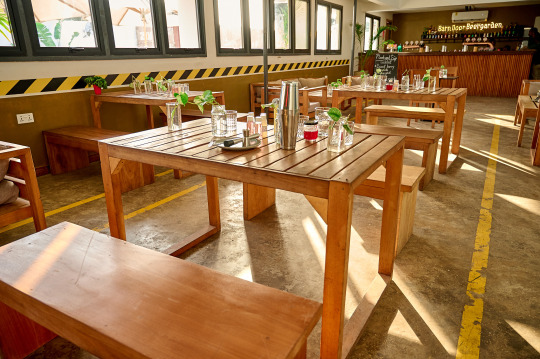
We started with the Mix and Sip sessions, where participants made their own cocktails under the expert guidance of yours truly. Two delicious cocktails graced the menu: the Sweet Berry Lemonade and the Ginger Lemonade. The Sweet Berry Lemonade is a burst of flavors with sweet and sour notes, muddled fresh mint leaves, apple liqueur, berry gin, and a touch of mixed fruit jam, all topped off with a spritz of sprite. Our favorite thing about this girl is her deceptive sweetness, it's sneakily sweet yet packs a punch!
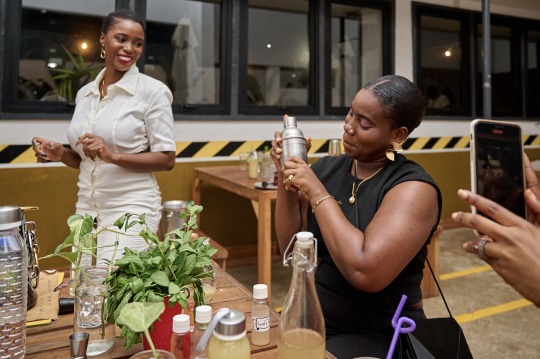
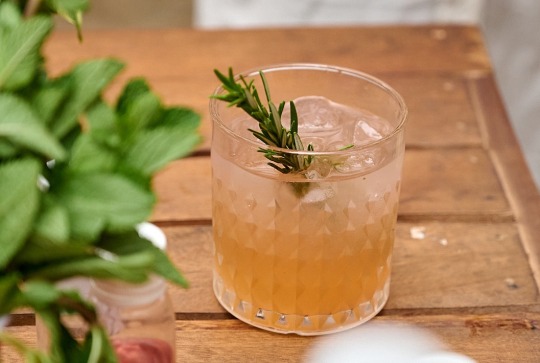
The latter, an original Azaree fan favorite but now with a local twist, featured homemade ginger syrup, zesty lemon juice, coconut vanilla syrup for a hint of sweetness, and the bold essence of ginger liqueur. What set this drink apart was its alcoholic base - the renowned Ghanaian spirit, Akpeteshie, made from fermented Palm wine adding a distinctive depth to the libation. This combination was to die for, and we absolutely loved hearing all the great reviews!
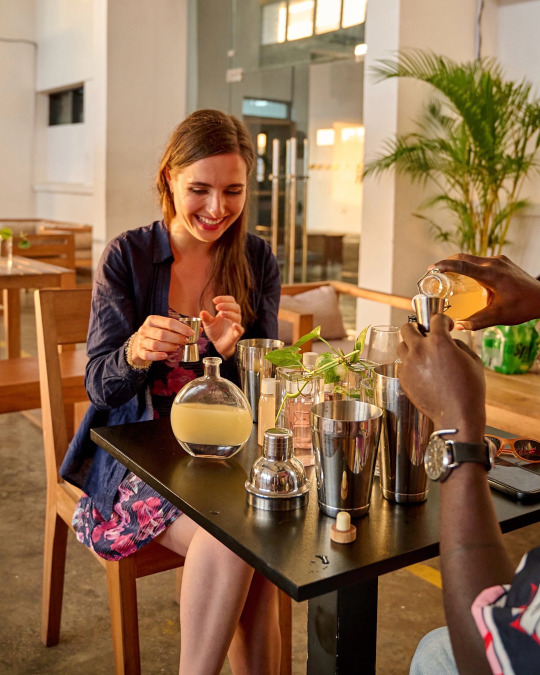
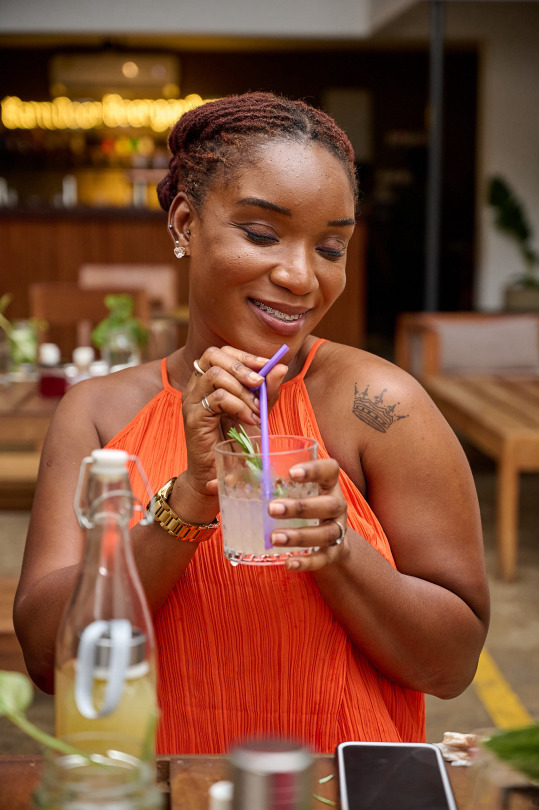
Transitioning from mixology to horticulture, we switched the conversation to plant care. Fresh cuttings of pothos and monstera were our green friends for the day, teaching us about nurturing new roots and ourselves. Sourced from Ahaban (ahabangh.com), these cuttings require a very simple routine; changing the water weekly until they sprout roots fit for replanting in soil.
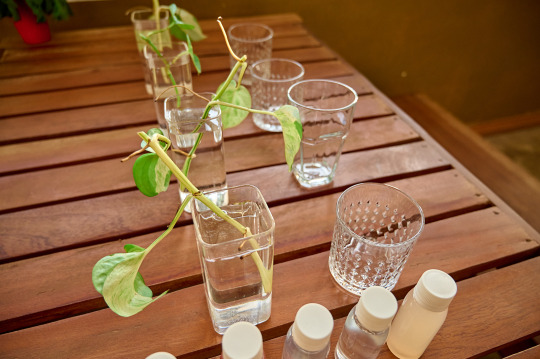
Our favorite twist was that this nurturing ethos extends beyond plants into self-care rituals. Each water change becomes a gentle reminder to indulge in personal rejuvenation. Participants opted for diverse self-care practices, from long walks to soothing body scrubs, highlighting the importance of reconnecting with yourself no matter how crazy life gets.

The laughter-filled photos captured the Plant & Sip essence perfectly - great vibes, new skills, and a whole lot of fun. It was so clear that the experience fostered a deeper connection to nature and self-care.
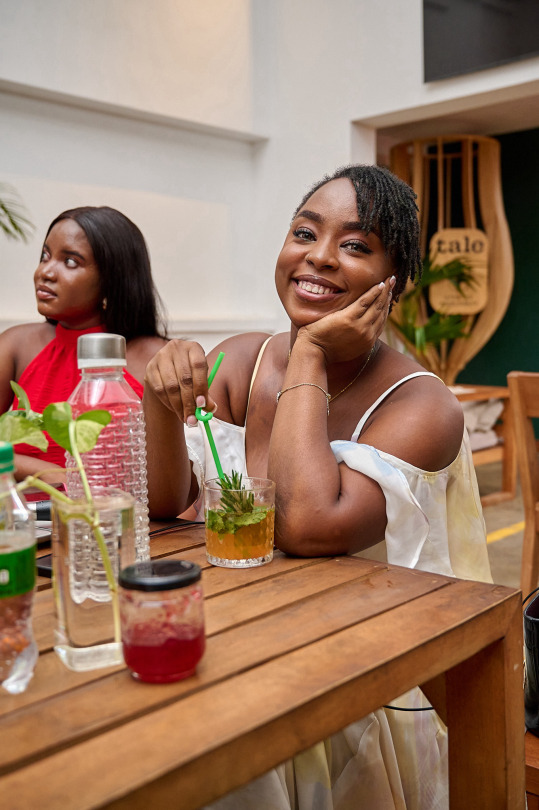
We’re still savoring the amazing event, & we can’t wait to see you all at the next one, ‘See Thru My Ice,’ a nature photography and cocktail tasting experience. It will be an amazing evening celebrating the natural beauty of Ghana & the rich flavors of our Culture on the 30th of March at Buro in Osu. Hope to see you there 🥂
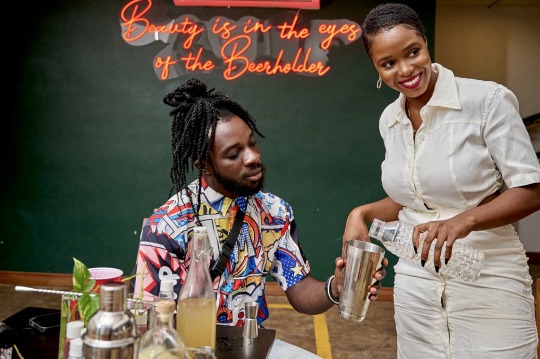
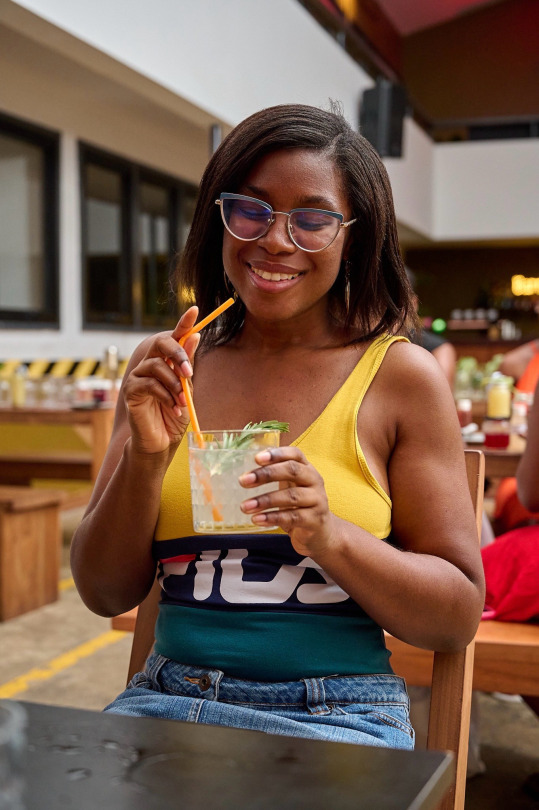
4 notes
·
View notes
Text
Embracing the Beauty of Black Color Hairstyles: A Timeless Trend

In the vast world of fashion and beauty, trends come and go, but there's one element that remains eternally stylish and captivating: black color hairstyles. Black hair has a unique allure and versatility that allows for endless creativity and self-expression. Whether you're looking to rock a sleek bob, intricate braids, or voluminous curls, black hair offers a canvas for artistic hairstyles that never go out of fashion. In this blog post, we celebrate the timeless beauty of black color hairstyles and explore the different ways you can embrace this incredible trend.
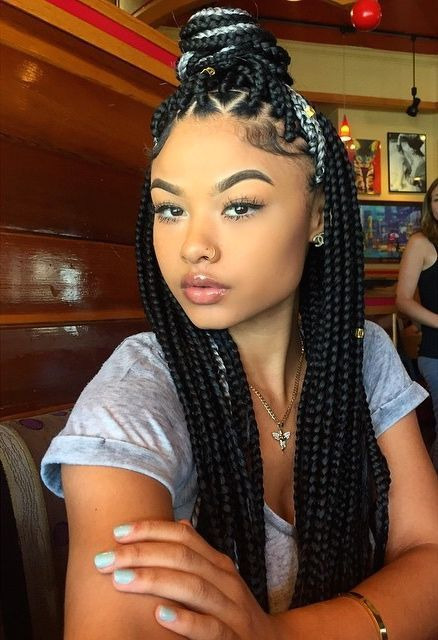
The Significance of Black Color Hairstyles:
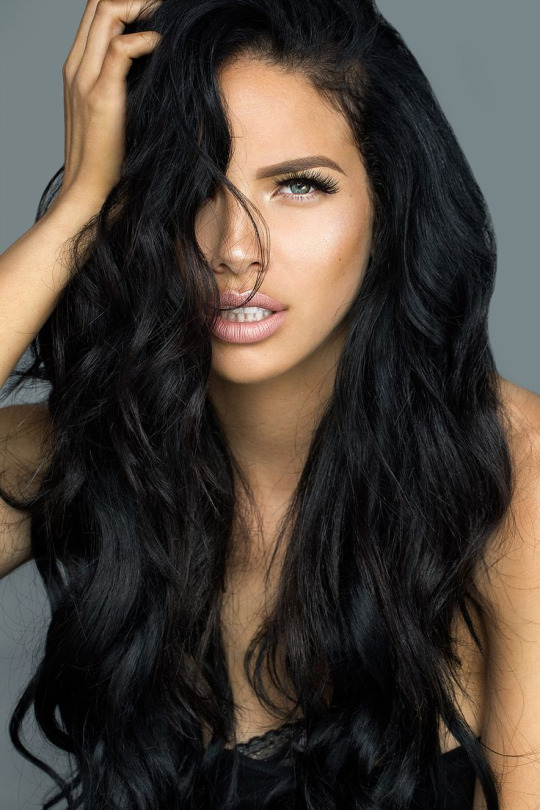
Black color hairstyles hold a special significance in various cultures and communities around the world. Historically, black hair has been a symbol of pride, strength, and identity for people of African descent. From traditional cornrows and dreadlocks to modern styles like afros and twists, black hair carries a rich cultural heritage. Moreover, black color hairstyles have gained popularity beyond racial boundaries, captivating individuals from diverse backgrounds who appreciate the beauty and versatility of these styles.
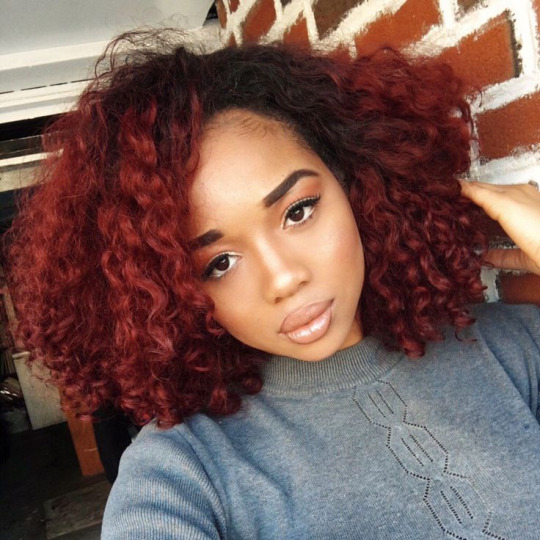
Sleek and Chic: The Classic Bob:
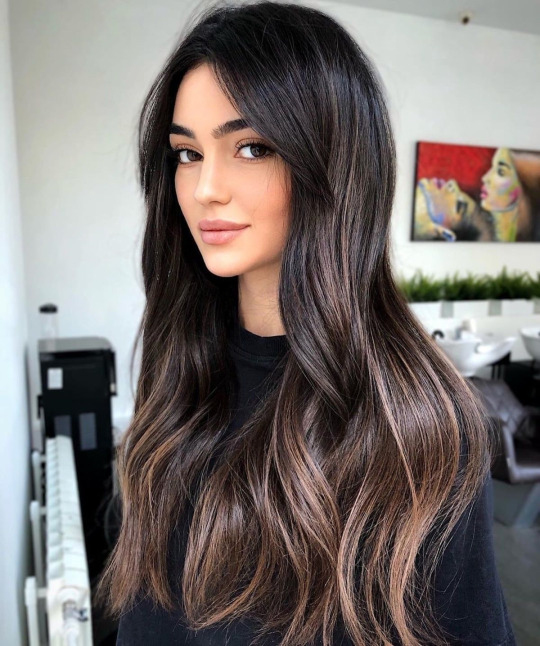
One iconic black color hairstyle that has stood the test of time is the classic bob. This elegant and sophisticated cut frames the face beautifully and exudes an air of confidence. Whether you opt for a blunt cut or a slightly asymmetrical style, the black color adds depth and intensity, making the bob a truly eye-catching choice. Pair it with a bold red lip and minimal makeup for a timeless and polished look.
Braids: A Work of Art:

Braided hairstyles have been a cornerstone of black hair culture for centuries. The intricate patterns and attention to detail make them true works of art. From the iconic cornrows to box braids, Ghana braids, and Senegalese twists, there are countless ways to rock braided styles. The black color amplifies the elegance and precision of these hairstyles, giving them a striking and captivating appearance. Whether you're going for a simple and neat look or a more elaborate design, braids allow for endless creativity and personalization.

Natural Hair: Embracing Your Curls:
In recent years, there has been a surge in the natural hair movement, encouraging individuals to embrace their curls, kinks, and coils. Black color hairstyles for natural hair celebrate the beauty of textured hair and encourage self-acceptance. From afros to twist-outs, bantu knots, and wash-n-go styles, the versatility of black natural hair is truly awe-inspiring. The black color enhances the depth and definition of these hairstyles, allowing your natural hair to take center stage and make a bold statement.
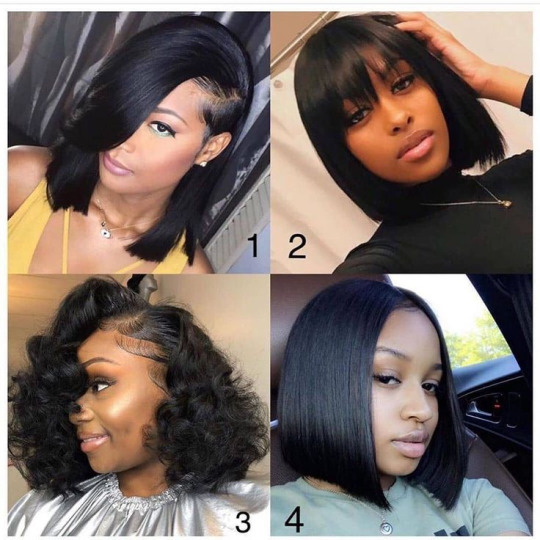
Experimenting with Color:
While we're celebrating black color hairstyles, that doesn't mean you can't play around with other colors too! Adding pops of color or highlights to your black hair can create a stunning contrast and elevate your look even further. Whether you go for vibrant hues like red, purple, or blue, or opt for subtle caramel or honey-toned highlights, the possibilities are endless. Just remember to choose a professional stylist who can help you achieve the desired results while maintaining the health and integrity of your hair.
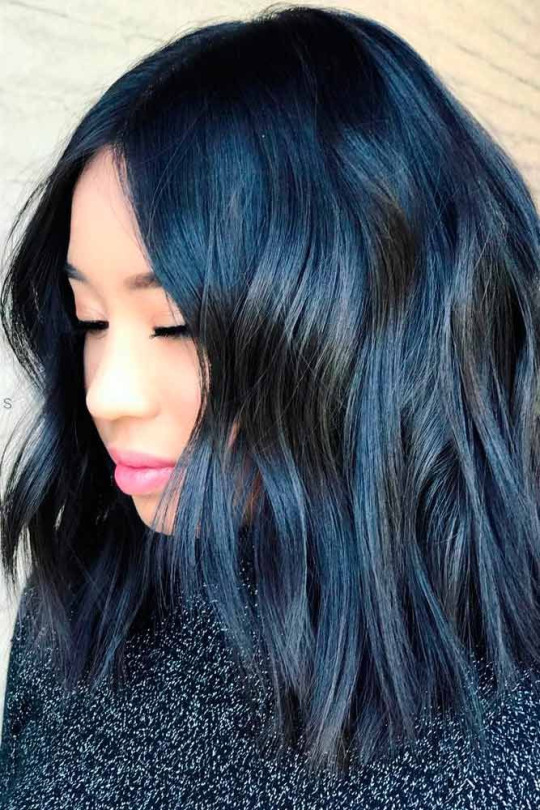
Black color hairstyles are a timeless trend that celebrates the natural beauty and diversity of black hair. From sleek bobs to intricate braids and natural curls, black hair offers a world of possibilities for creative expression. Embrace your individuality, celebrate your roots, and experiment with different styles to find the one that truly reflects your unique personality. Whether you're attending a special occasion or simply want to switch up your everyday look, black color hairstyles are here to stay, captivating hearts and turning heads wherever you go.
2 notes
·
View notes
Text
4 Tips for Using Cold-Pressed Oils in Winter Cooking
Winter calls for nourishing meals that provide warmth and support immunity, and cold-pressed oils are an excellent choice for winter cooking. Known for their rich nutrient content, cold-pressed oils are extracted without heat, preserving essential fatty acids, antioxidants, and vitamins that are particularly beneficial in colder months. Here are four effective tips to get the most out of cold-pressed oils in your winter meals.
1. Choose Oils that Withstand Low to Medium Heat
Cold-pressed oils like olive, sesame, and coconut oil are perfect for winter recipes that require gentle heat. Their natural flavors enhance soups, stews, and sautés without losing valuable nutrients. While coconut oil is ideal for medium-heat cooking due to its high content of stable saturated fats, olive oil and sesame oil are better suited for low-heat dishes or as finishing oils. This way, the oils retain their nutritional value, providing the body with beneficial fats and antioxidants that support heart and skin health.
2. Incorporate Oils into Soups and Stews for Rich Flavor
Winter soups and stews benefit greatly from the addition of cold-pressed oil manufacturer & Supplier. Drizzling a spoonful of olive oil or flaxseed oil just before serving adds a delicious, nutritious finish to warm dishes. These oils boost the flavor and add a creamy texture, while omega-3-rich oils like flaxseed aid in reducing winter inflammation. The healthy fats also help your body absorb fat-soluble vitamins from the vegetables in your soups, enhancing overall nutrition.
3. Enhance Baked Goods with Cold-Pressed Oils
Using cold-pressed coconut or almond oil in winter baking adds natural flavor and valuable nutrients. Coconut oil provides a subtle sweetness and enhances the richness of muffins, cookies, and cakes, making it ideal for winter treats. Cold-pressed almond oil, rich in vitamin E, adds a light nutty flavor and a moist texture to baked goods while nourishing skin and supporting immunity — perfect for the dry winter season. Use these oils as a substitute for butter or margarine for a healthier, plant-based twist in your baking.
4. Use Cold-Pressed Oils in Dressings for Winter Salads
Winter salads featuring root vegetables, nuts, and seeds pair excellently with cold-pressed oils in dressings. Mix olive oil with lemon juice, mustard, or vinegar to create a robust dressing rich in healthy fats. Cold-pressed sesame oil also works well in Asian-inspired dressings, enhancing flavors while adding antioxidants and essential minerals that support immune health. These oils provide warmth and richness, making raw salads more satisfying in colder months.
Why Cold-Pressed Oils are Ideal for Winter
Cold-pressed oils retain their full spectrum of nutrients, which support immunity, skin hydration, and overall health during winter. Their healthy fats, vitamins, and antioxidants work to nourish the body, providing warmth from within.
Embrace these cold-pressed oil manufacturer & supplier in your winter meals to enjoy both their flavor and health benefits, keeping you energized and well-nourished all season long.
Visit for more Blogs : How to Identify Pure Lakdi Ghana Oil in Pune: A Buyer’s Guide
Liflic is multiple types of Cold Press Oil Manufacturer, Supplier in Kothrud & All Over Pune Location :
Groundnut Oil,
Coconut Oil,
Sunflower Oil,
Safflower Oil,
Sesame Oil,
Almond Oil,
Mustard Oil,
Flaxseed Oil
If you Want to Order Call Now for more details : +91 74200 02914
Also You can Visit our Shop : Shop №7, Karan Plaza, near Rosary School, Atul Nagar, Warje, Pune, Maharashtra 411058
Get Direction
For Any Update Visit Profile : Click Here
#Cold Pressed Oil#Cold Press Oil#Coldpressoilmanufacturer#Coldpressedoilsupplier#Lakdi Ghana Oil#cold pressed oil shop#lakdi ghana oil#lakdi ghana oil kothrud#lakdi ghana oil dealer in kothrud#cold pressed groundnut oil#cold pressed coconut oil#cold pressed sesame oil#cold pressed almond oil
0 notes